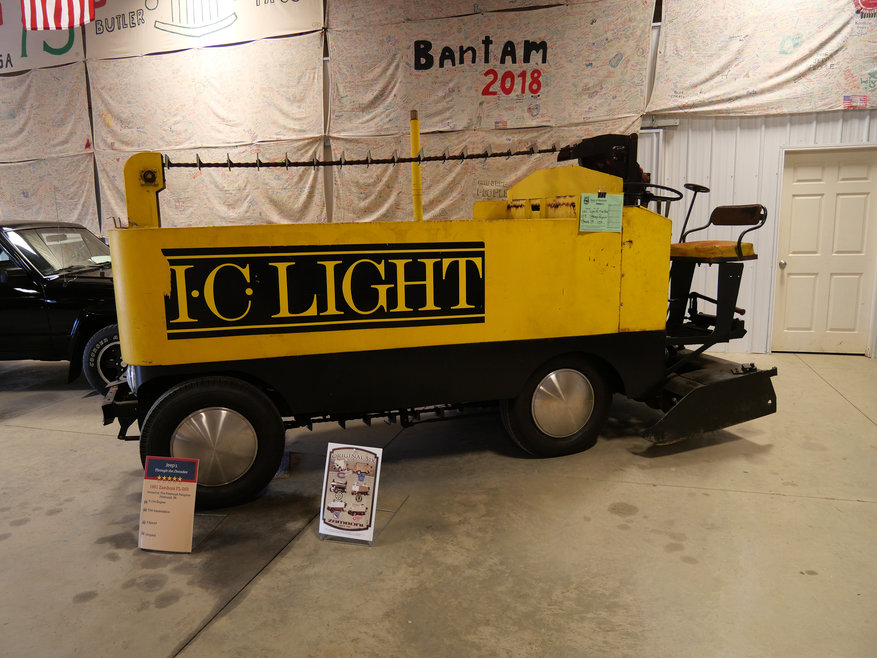by Matt Konkle
Managing Editor
SLIPPERY ROCK, Pa. — You may know Jeeps as rugged off-road vehicles with lift kits, large tires and the capability to get through pretty much anything.
However, one not-so-known fact is Jeep helped conquer something else as well.
Something indoors.
Ice.
Well, specifically the resurfacing of ice and the ability to do it faster than anything else currently around a rink at that time.
At this year’s 11th annual Bantam Jeep Heritage Festival on the Coopers Lake Campground in Slippery Rock, Pennsylvania, organizers brought in an original FL-269 Zamboni constructed on a 1961 Jeep CJ-5 chassis.
This particular machine first touched ice in September 1961 and helped maintain that surface for events like the Ice Capades and Pittsburgh’s American Hockey League franchise called the Hornets. Eventually it made its way to the major leagues when the Pittsburgh Pengiuns became one of six new National Hockey League teams in 1967.
“The Pittsburgh Penguins are bringing up a Jeep-base Zamboni,” said Rod Murray, the Penguins’ senior director of production and game presentation to the Butler Eagle. “This is the original Zamboni that was purchased in 1961 for the brand new, at the time, Civic Arena, the ‘Igloo.’”
The all-wheel drive Jeep platform was the chassis of choice for all Zamboni machines from around 1950 through the mid-1960s.
A quick bit of history.
The first ice resurfacer was invented by Frank Zamboni in 1949. He was originally in the refrigeration business and had created a plant for making ice blocks that could be used in refrigeration applications. As the demand for that stuff fell off, he looked for another way to capitalize on his expertise with ice production.
So he decided to open a skating rink, the Iceland Skating Rink, in Paramount California in 1939. But in order to resurface the rink, three or four workers had to scrape, wash, and squeegee the ice. A thin layer of water was then added for the fresh ice. This process was extremely time consuming, and Zamboni wanted to find a more efficient way to resurface the ice.
Then, in 1947, he built a machine that could do all this, and constructed it on an army surplus Willys Jeep chassis. A blade was mounted on the machine, which would shave the ice; the ice would then receive a thin layer of water creating a smooth sheet of ice. The prototype had a tank that held the ice shavings, which were carried to the tank via a conveyor belt.
Blade problems caused that version to soon be scrapped and a new one created in 1949 — called the Model A Zamboni that was also created from a Jeep chassis and had a special tank for water as well as a new snow-holding tank.
Others soon followed, including the Model B based on a CJ-3A, Model D from a CJ-3B and Model E from a CJ-5 that all added refinements like a higher driver chair and increased water holding ability. This last one was the first standardized Zamboni and the last to use a Jeep chassis for creation.
At the Bantam Jeep Heritage Festival, this FL-269 cost just over $8,300 to build and deliver, which is about $80,800 today. It remained in service from 1961 all the way through 1996, when it retired to the Penguins’ practice facility in Canonsburg, Pennsylvania.





























